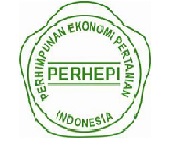Peningkatan Kapasitas Produksi Petani Jamur Tiram Desa Karangpring Melalui Teknologi Alat Pengepres Baglog Dua Tuas
Abstract
Increasing Production Capacity of Oyster Mushroom Farmers in Karangpring Village through Baglog Two-Level Pressing Technology. The production capacity of baglog manually by oyster mushroom farmers in Karangpring Village, Sukorambi District, Jember Regency is 1,250 baglogs/month with a low average productivity of about 625 kg/4 months which is only done by 2 workers. About 25% of the total baglog made had poor oyster mushroom mycelium growth due to the lack of density of baglog so oyster mushrooms could not be harvested. The problem that can be identified is the lack of experienced workers who can properly compact baglog from F3 oyster mushroom seeds. Oyster mushroom baglog that is less dense causes the growth of oyster mushroom mycelia to be inhibited, resulting in decreased productivity. There needs to be empowerment that aims to provide education on the technique of properly compacting the oyster mushroom baglog while at the same time providing assistance with a two-lever baglog press. The method used in this empowerment activity is training and demonstration of the use of a two-lever baglog press. The result of this service activity is that baglog pressing training is carried out with a two-lever baglog pressing machine for oyster mushroom farmers. With this tool, the baglog compaction process is faster with the right density (100%) where previously 25% of the total baglog that was compacted could not be completely compacted if done manually. The production target of F3 oyster mushroom seeds, which was originally very late, became on time with only 2 workers assisted by a two-lever baglog pressing machine. Empowerment of oyster mushroom farmers through training and the provision of a two-lever baglog press was able to increase the production of F3 oyster mushroom seedlings of 10,500 baglog per month with an increase in production efficiency of 573% compared to before using the tool.
Keywords
Full Text:
PDF (Bahasa Indonesia)References
Aldillah, R. (2016). Kinerja Pemanfaatan Mekanisasi Pertanian dan Implikasinya dalam Upaya Percepatan Produksi Pangan di Indonesia. Forum Penelitian Agro Ekonomi, 34(2), 163–177. https://doi.org/10.21082/fae.v34n2.2016.163-171
Fadhila, A. A., Darwis, W., & Berutu, A. S. (2020). Pertumbuhan Miselium pada Bibit F2 dan F3 Jamur Tiram Putih (Pleurotus ostreatus (Jacq. Ex. Fr) kummer) dengan Penambahan Gula (Sukrosa) di Usaha Bersama Budidaya Jamur Tiram Kota Medan. Konservasi Hayati, 16(1), 22–29. https://doi.org/10.33369/hayati.v16i1.11564
Handaka, N., & Prabowo, A. (2013). Kebijakan Antisipatif Pengembangan Mekanisasi Pertanian. Analisis Kebijakan Pertanian, 11(1), 27–44. https://doi.org/10.21082/akp.v11n1.2013.27-44
Husna, F., Al Hidayat, F., Muqorrobin, Sebastian, & Yulia, M. (2015). Rancangbangun Alat Press Baglog Jamur Dua Silinder dengan Penggerak Motor Listrik. TekTan Jurnal Ilmiah Teknik Pertanian, 7(3), 190–201. https://doi.org/10.25181/tektan.v7i3.863
Kurniati, F., Sunarya, Y., & Nurajijah, R. (2019). Pertumbuhan dan Hasil Jamur Tiram Putih (Pleurotus ostreatus (Jacq) P. Kumm) pada Berbagai Komposisi Media Tanam. Media Pertanian, 4(2), 59–68. https://doi.org/10.37058/mp.v4i2.1358
Lutfi, M., Jelita, G. A., Prabowo, V. J., Andana, F. T., & Pradika, S. (2015). E-Log (Easy Baglog) Alat Pengepres Baglog Jamur Otomatis untuk Meningkatkan Produksi Jamur. Pelita - Jurnal Penelitian Mahasiswa UNY, 10(2), 105–115.
Maligan, J. M., & Edyson. (2016). Introduksi Teknologi Mekanis pada Usaha Budidaya dan Olahan Jamur Tiram di 2 UKM Kota Batu. TEKNOLOGI PANGAN: Media Informasi Dan Komunikasi Ilmiah Teknologi Pertanian, 7(3), 144–153. https://doi.org/10.35891/tp.v7i3.520
Mundiyah, A. I., Sari, N. M. W., Nabilah, S., & Suparyana, P. K. (2020). Pelatihan Budidaya Jamur Tiram dengan Konsep Urban Farming untuk Masyarakat Perkotaan. Jurnal Pengabdian Al-Ikhlas, 6(2), 156–163. https://doi.org/10.31602/jpaiuniska.v6i2.3890
Pratama, W. D. A. (2016). Evaluasi Manajemen Pemberdayaan Masyarakat. J+Plus Unesa, 5(1), 1-7.
Rizaldi, T., Raju, & Piliang, M. R. (2019). Design of filler and compactor for oyster mushroom growing medium (baglog). IOP Conference Series: Earth and Environmental Science, 260(1), 1–7. https://doi.org/10.1088/1755-1315/260/1/012031
Sariasih, Y. (2013). Pengembangan Budidaya Jamur Tiram Putih Sebagai Agribisnis Prospektif Bagi Gapoktan Seroja I Kandang Limun Bengkulu. Jurnal AGRISEP, 13(1), 11–18. https://doi.org/10.31186/jagrisep.12.1.11-18
Subagiyo. (2016). Analisis Kelayakan Finansial Penggunaan Alsintan dalam Usaha Tani Padi di Daerah Istimewa Yogyakarta. Agros, 18(1), 33–48.
Suharto, E. (2014). Membangun Masyarakat Memberdayakan Rakyat : Kajian Strategis Pembangunan Kesejahteraan Sosial dan Pekerjaan Sosial. Bandung: Refika Aditama.
Sutarman, S. (2012). Keragaan dan Produksi Jamur Tiram Putih (Pleurotus Ostreatus) Pada Media Serbuk Gergaji dan Ampas Tebu Bersuplemen Dedak dan Tepung Jagung. Jurnal Penelitian Pertanian Terapan, 12(3), 163–168. https://doi.org/10.25181/jppt.v12i3.212
Umniyatie, S., Astuti, Pramiadi, D., & Henuhili, V. (2013). Budidaya Jamur Tiram (Pleurotus sp.) Sebagai Alternatif Usaha Bagi Masyarakat Korban Erupsi Merapi Di Dusun Pandan, Wukirsari, Cangkringan, Sleman DIY. Inoteks: Jurnal Inovasi Ilmu Pengetahuan, Teknologi, Dan Seni, 17(2), 162–175. https://doi.org/10.21831/ino.v17i2.3357
DOI: https://doi.org/10.20961/prima.v6i2.57649
Refbacks
- There are currently no refbacks.
View My Stats

This work is licensed under a Creative Commons Attribution-ShareAlike 4.0 International License.


.jpg)



1.jpg)











